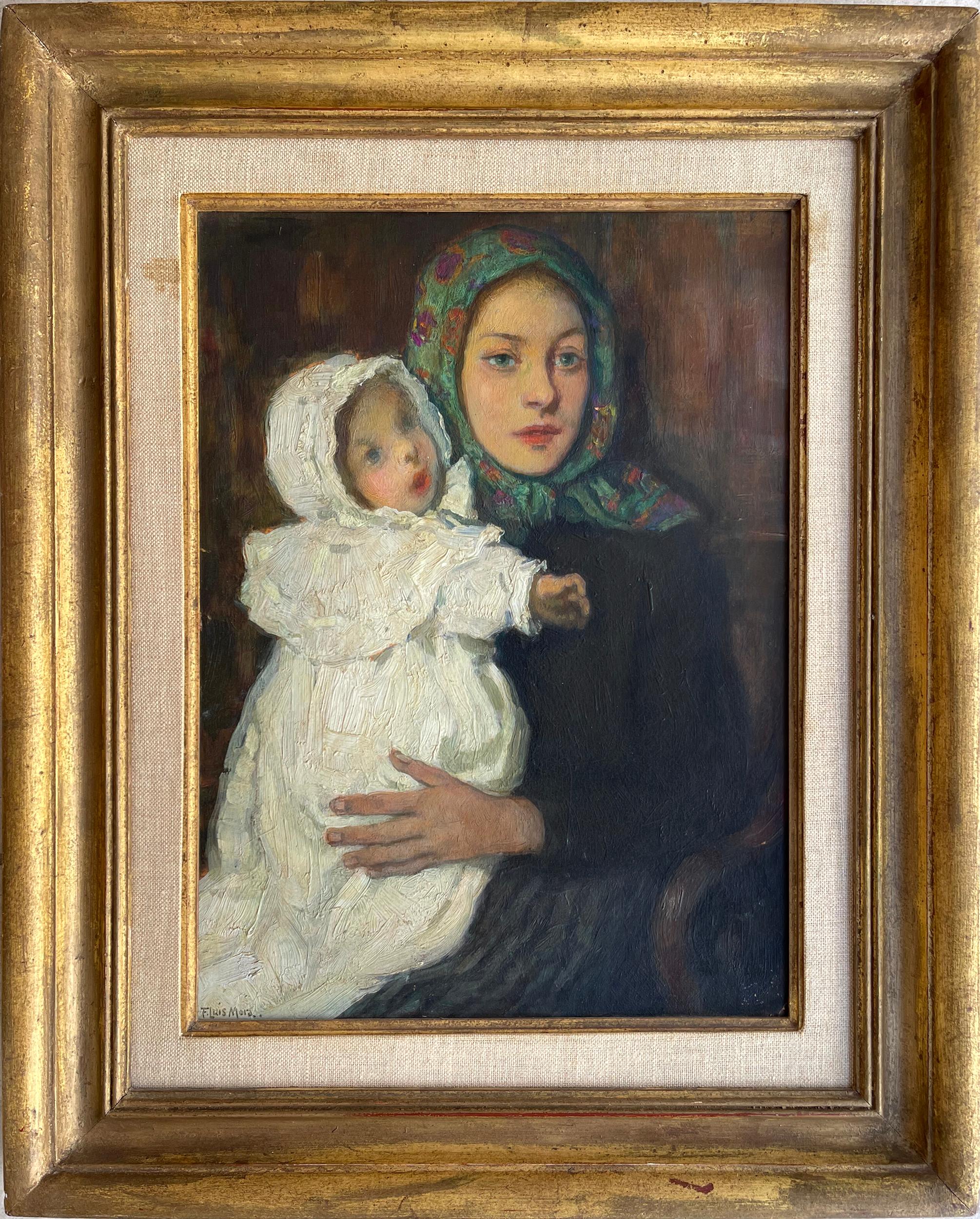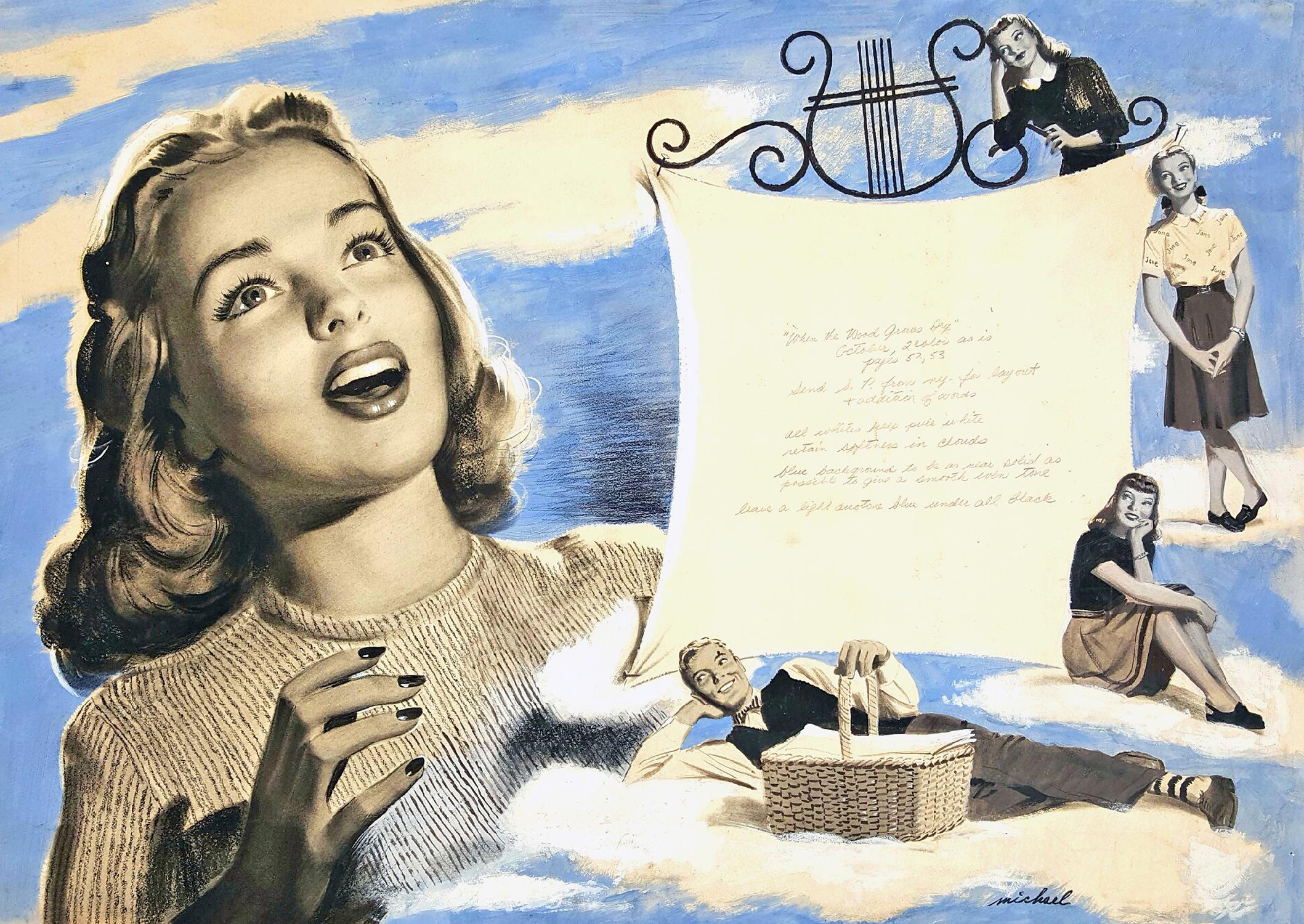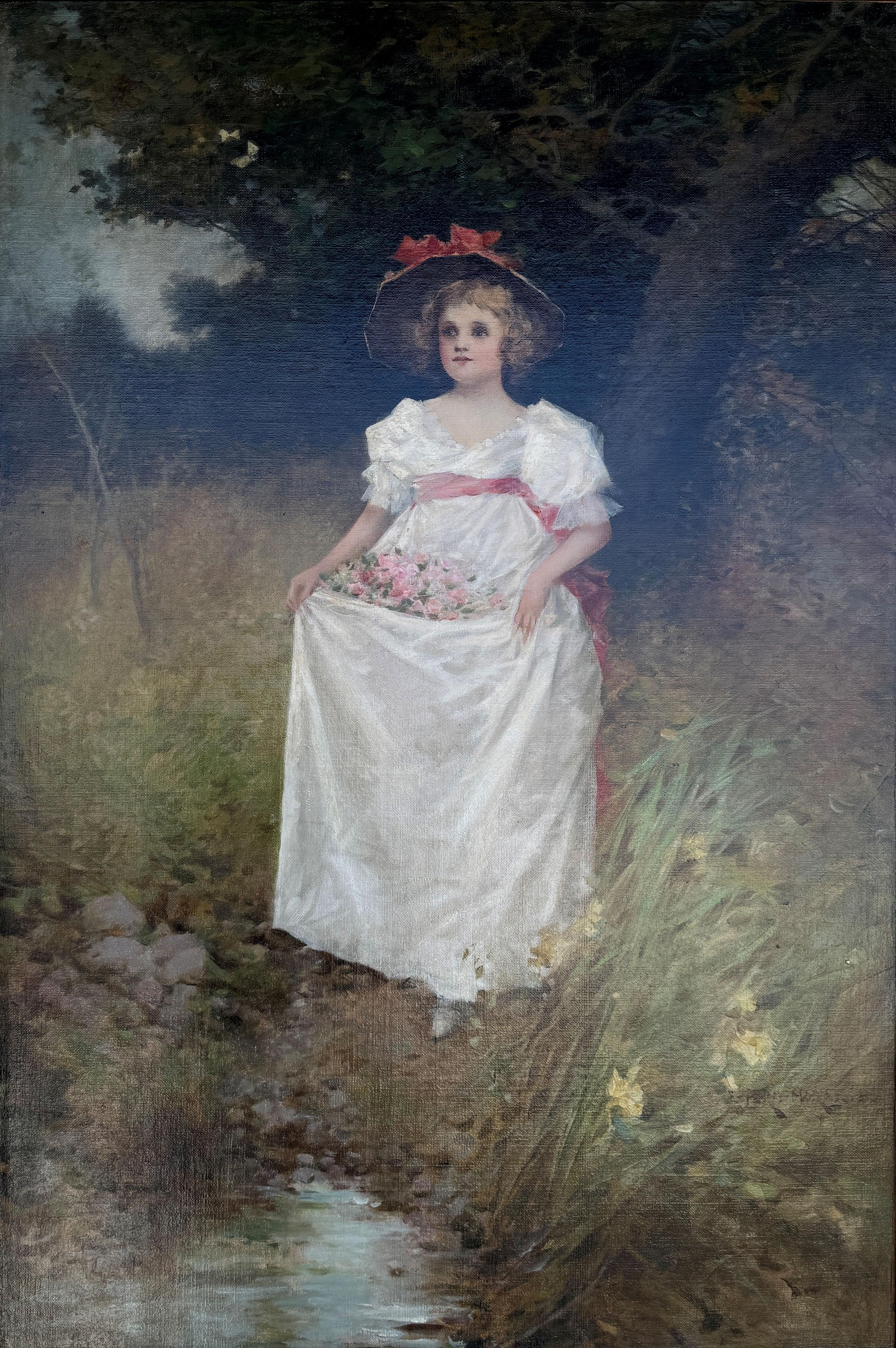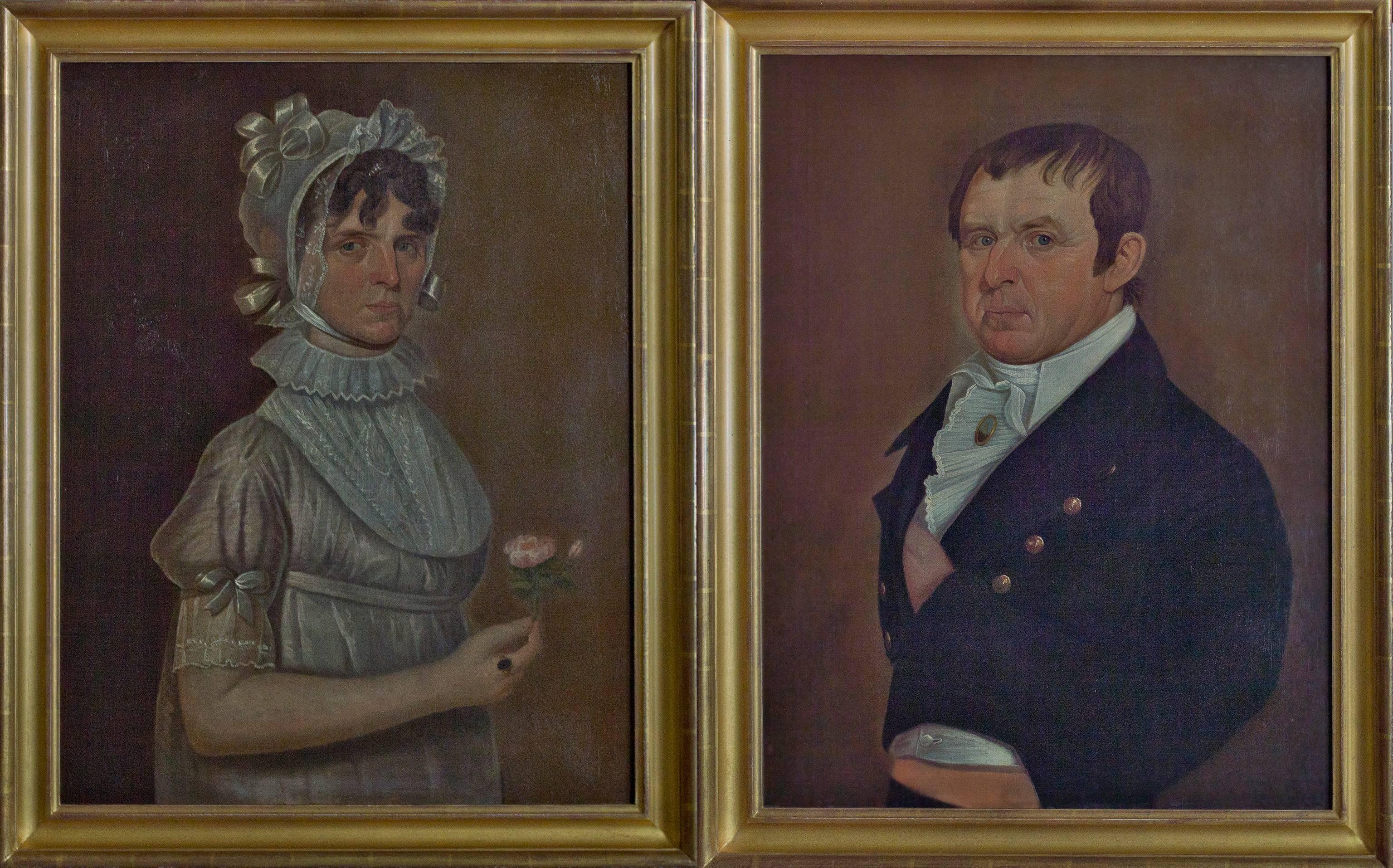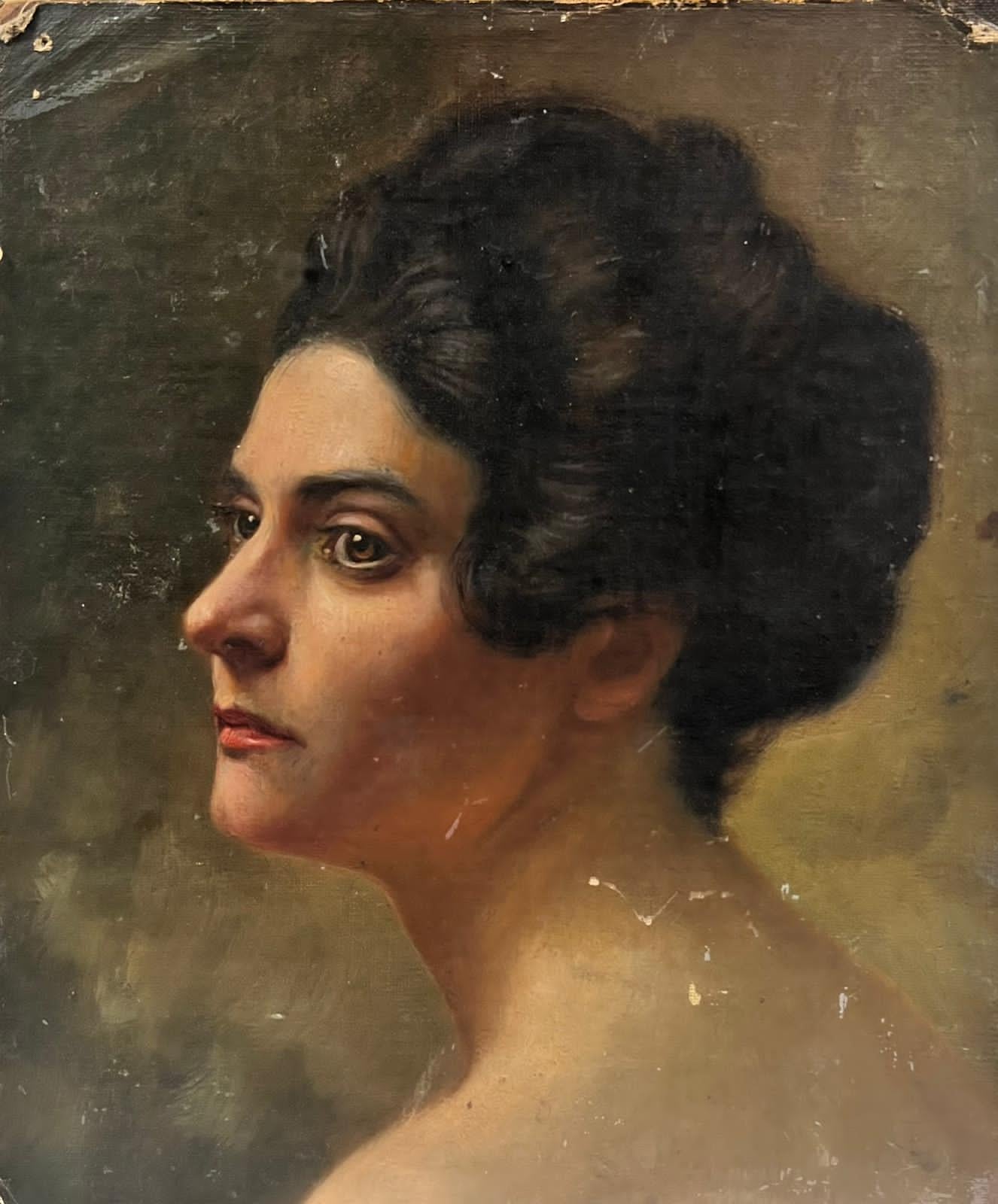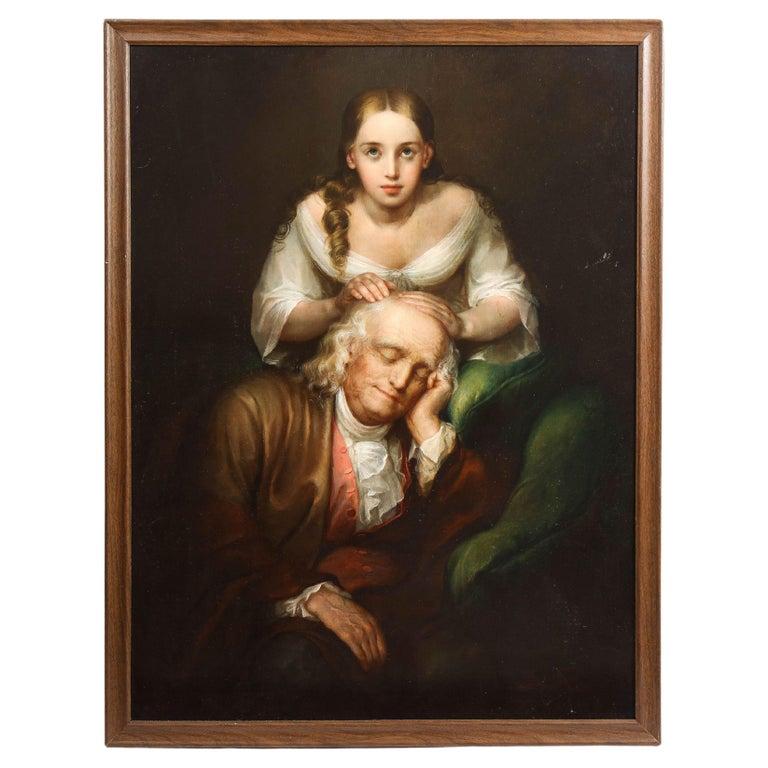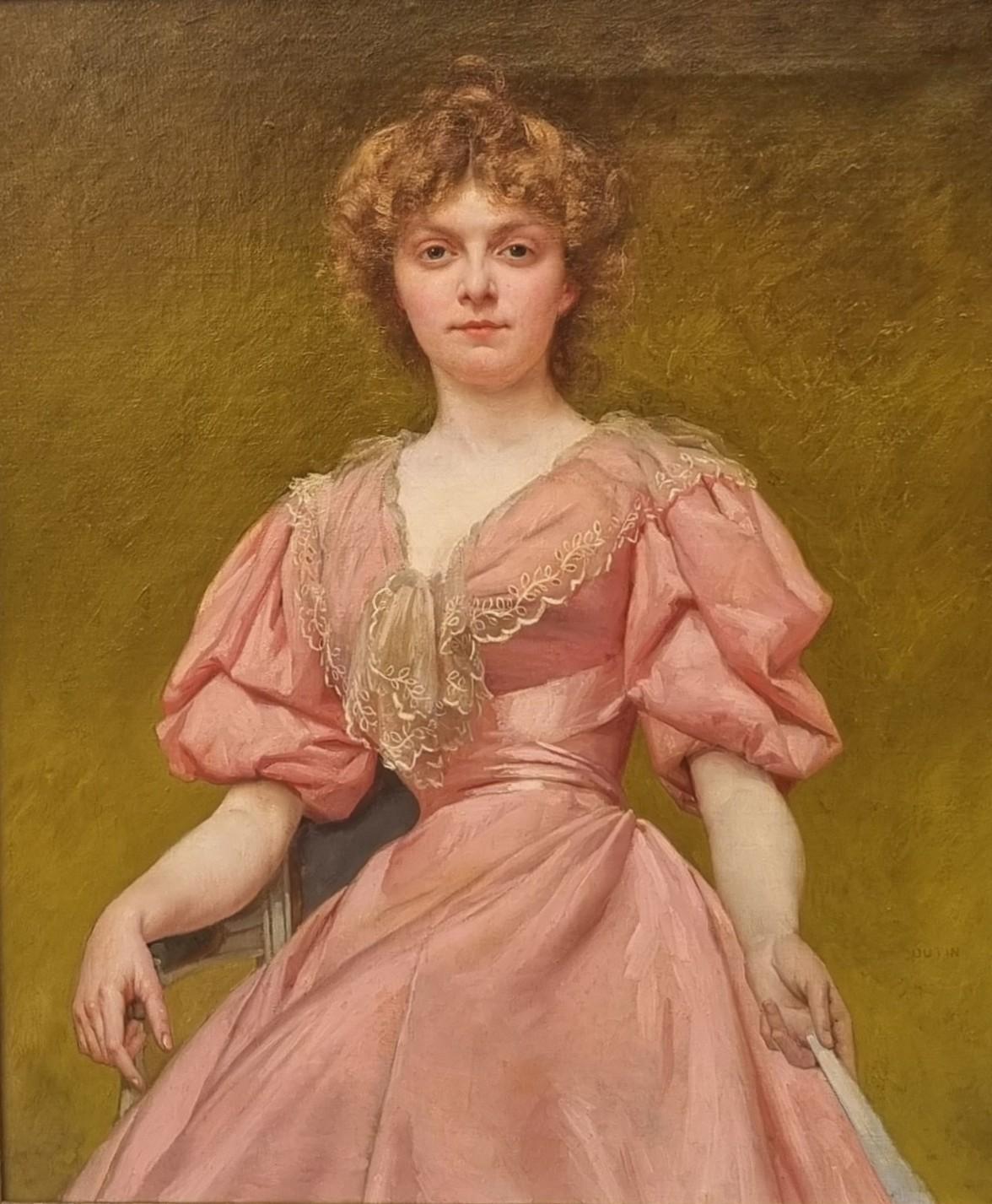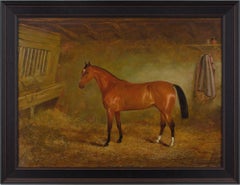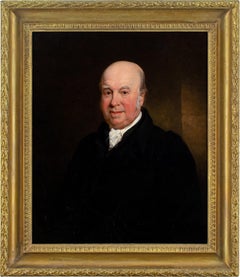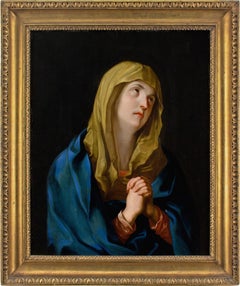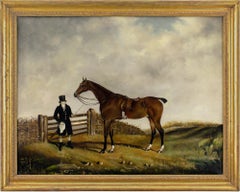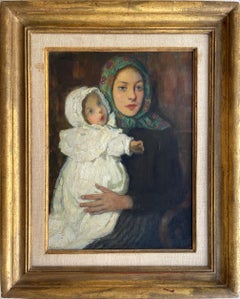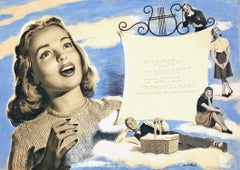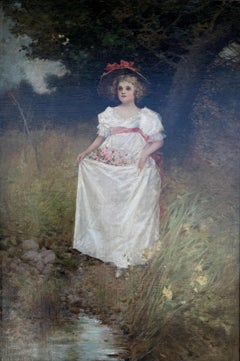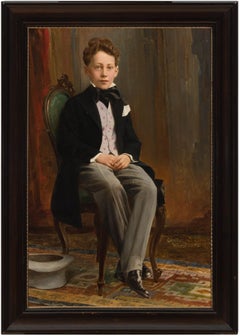
Early 20th-Century German School Portrait Of A Boy, Oil Painting
View Similar Items
Want more images or videos?
Request additional images or videos from the seller
1 of 13
UnknownEarly 20th-Century German School Portrait Of A Boy, Oil Painting1933
1933
Price:$378.30
$535.13List Price
About the Item
- Creation Year:1933
- Dimensions:Height: 34 in (86.36 cm)Width: 24 in (60.96 cm)
- Medium:
- Movement & Style:
- Period:
- Condition:Overall very presentable. A few minor marks here and there. Frame with some age-related wear.
- Gallery Location:Cheltenham, GB
- Reference Number:1stDibs: LU2328211662912
About the Seller
5.0
Platinum Seller
Premium sellers with a 4.7+ rating and 24-hour response times
Established in 2017
1stDibs seller since 2023
242 sales on 1stDibs
Typical response time: 1 hour
Authenticity Guarantee
In the unlikely event there’s an issue with an item’s authenticity, contact us within 1 year for a full refund. DetailsMoney-Back Guarantee
If your item is not as described, is damaged in transit, or does not arrive, contact us within 7 days for a full refund. Details24-Hour Cancellation
You have a 24-hour grace period in which to reconsider your purchase, with no questions asked.Vetted Professional Sellers
Our world-class sellers must adhere to strict standards for service and quality, maintaining the integrity of our listings.Price-Match Guarantee
If you find that a seller listed the same item for a lower price elsewhere, we’ll match it.Trusted Global Delivery
Our best-in-class carrier network provides specialized shipping options worldwide, including custom delivery.More From This Seller
View All19th-Century English School, Portrait Of A Bay Horse, Antique Oil Painting
Located in Cheltenham, GB
This charming mid-19th-century English school oil painting depicts a bay horse in a stable.
The British aristocracy has always had a passion for equestrian activities, and during th...
Category
Mid-19th Century Victorian Animal Paintings
Materials
Oil, Canvas
Early 19th-Century English School Portrait Of Samuel Jones Of Skeyton, Norfolk
Located in Cheltenham, GB
This fine early 19th-century English oil painting depicts Samuel Jones of Skeyton, Norfolk, smartly attired in a black coat with white cravat. The portrait was previously in the coll...
Category
1830s Portrait Paintings
Materials
Oil, Canvas
Joszef Schmidt, After Guido Reni Mater Dolorosa, Antique Oil Painting
Located in Cheltenham, GB
This early 19th-century oil painting by Hungarian artist Joszef Schmidt (1810-1875) depicts the Mater Dolorosa. It’s after a work by Italian artist, Guido Reni (1575-1642). Schmidt w...
Category
Early 19th Century Italian School Figurative Paintings
Materials
Panel, Oil
W.S. Cooper, A Bay Hunter & Groom In A Landscape
Located in Cheltenham, GB
This early 19th-century oil painting by English artist W.S. Cooper (act. 1832-1834) depicts a bay hunter and groom in a landscape with a hunt beyond.
Once hanging in a proud English...
Category
1830s Victorian Animal Paintings
Materials
Oil, Canvas
Early-18th Century French School, Ex-Voto Portrait With Emilian Jacobin
Located in Cheltenham, GB
This splendid early 18th-century French oil painting represents an ‘ex-voto’ with Emilian Jacobin and a depiction of the Virgin Mary with Christ and angels.
Ex votos are votive offe...
Category
1710s French School Portrait Paintings
Materials
Oil, Canvas
Late 19th-Century French School, Head Study
Located in Cheltenham, GB
This enchanting late 19th-century French oil painting depicts the head of a bearded man.
Rendered with an abundance of consideration and feeling, the introspection of the figure po...
Category
1890s French School Portrait Paintings
Materials
Canvas, Oil
You May Also Like
Mother and Child - Classic Portrait
By Francis Luis Mora
Located in Miami, FL
This warm portrait looks like it could have been painted by Corot. Francis Luis Mora paints in that tradition. It's a small painting that invites the viewer to look closer. The art...
Category
1920s Academic Portrait Paintings
Materials
Oil, Board
Mid-Century Americana "Good House Keeping Magazine", 1948
By Michael Silver
Located in Miami, FL
When the Wood Grows Dry "Good House Keeping Magazine" illustration
Surreal depiction of a young mid-century girls social life Good House Keeping Magazi...
Category
1940s Academic Figurative Paintings
Materials
Gouache, Board
"Portrait of a Woman" Edward Percy Moran, Early American Portrait, Bucolic
By Edward Percy Moran
Located in New York, NY
Edward Percy Moran
Portrait of a Woman
Signed lower right
Oil on canvas
30 x 20 inches
Provenance:
The Madison Gallery, Atlanta
Percy Moran was the son of marine painter Edward Mo...
Category
1890s Academic Figurative Paintings
Materials
Canvas, Oil
Óleo sobre tela - Retrato de caballero con sombrero
Located in Sant Celoni, ES
Firmado en la parte inferior (desconozco el artista)
Se presenta sin enmarcar la pintura
El estado de la pintura es aceptable
Medidas obra: 58 x 48 cm.
Category
Early 1900s Academic Portrait Paintings
Materials
Oil
Óleo sobre tela - Retrato de dama con tocado floral
Located in Sant Celoni, ES
La obra no va firmada
Se presenta sin enmarcar la pintura
El estado de la pintura se puede ver, está bastante craquelada y está reentelada
Medidas de la obra: 59 x 45 cm.
Category
Mid-19th Century Academic Portrait Paintings
Materials
Oil
18th century diptych portraits man and woman American formal dress flower
By William Jennys
Located in Milwaukee, WI
The present pair of portraits would make an exceptional addition to any collection of early American art not only because they were painted by the notable William Jennys, but also because the sitters are members of notable and influential New England families. In addition, these pendants have impeccable provenance: they have never left ownership of the decedents of the Kimball family and this is the first time they have been available for purchase.
David Kimball (1766-1848) and Nancy Stacy Kimball (1774-1844) were members of historic Massachusetts families. David Kimball is a sixth-generation decedent of Richard Kimball (d. 1675) and Ursula Scott (d. 1659), who emigrated from Rattlasden, Suffolk County, England to Watertown MA around 1634. The family then relocated in 1637 to Ipswich, the city with which the family is now most strongly identified, when Richard was appointed to be a wheelwright.[1] Nancy likewise had early New England ancestry, descended from Simon Stacy and Elizabeth Clark, who were married in London in 1620.[2]
Nancy Stacy was the second wife of David Kimball, and the two were married in 1799. Given this, the present pendant portraits were likely completed shortly after the marriage. David had two children by his first wife Mary Morse, who died in September of 1798. David and Nancy would have nine additional children between 1801 and 1815.[3]
Most notably, the couple were parents of the Boston politician and showman Moses Kimball (1809-1895).[2][3] Moses would found the Boston Museum, an early for-profit museum and theater opened in 1841 that resembled European curiosity cabinets: the museum displayed paintings of Thomas Scully and Charles Peale alongside Chinese artwork, stuffed animals, dwarves and mermaids. Alongside these exhibits, visitors could attend the theater which held performances by gymnasts and contortionists, followed by performances of Shakespeare and Dickens.[4] This museum set the model for the Museum of Fine Arts, Boston, which when founded in 1870 held a similarly diverse collection and appealed to the interests of a diverse set of visitors.[5] Moreover, some Greek antiquities from Moses Kimball's museum were eventually given to the MFA and Moses donated approximately $5,000 to the MFA's endowment upon his death.[6][7]
William Jennys (1774–1859), also known as J. William Jennys, is an important American primitive portrait...
Category
1790s Academic Portrait Paintings
Materials
Canvas, Oil
Recently Viewed
View AllMore Ways To Browse
Portrait Of An Elegant Woman Painting
Portrait Painting Of Princess
Gentleman Oil Portrait
Portrait King Charles
19th Century Children Portraits
Society Lady Painting
Woman In A Hat Portraits
18th Century Italian Portrait
18th Century British Portrait
Portrait Painting Girl 19th
17th Century Dutch Portrait
Oil On Canvas Military Portraits
18th Century English Oil Paintings
Blue Venus
Portrait Of A Little Girl
18th Century French Portrait Painting
Portraits Actress Painting
Lady B
